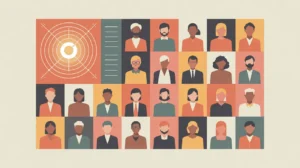Importance of Movement Building
Movement building mobilizes people, resources, and ideas to create large-scale social and political change. It is critical for addressing issues that require shifts in culture, norms, and power, beyond the reach of single organizations or programs. In development and social innovation, movement building matters because it transforms isolated efforts into collective action capable of influencing policies, institutions, and systems.
Definition and Features
Movement building refers to the process of organizing individuals and groups around a shared vision for change, sustained over time through collective strategies. Its defining features include:
- Shared Vision – unites diverse actors around a common cause.
- Collective Identity – fosters solidarity through symbols, narratives, and shared experience.
- Distributed Leadership – empowers multiple leaders and networks to advance the movement.
- Tactics and Strategies – combines advocacy, protest, storytelling, and institutional engagement.
- Longevity – persists beyond single campaigns to achieve deeper transformation.
How this Works in Practice
In practice, movement building can be seen in civil rights struggles, feminist and LGBTQ+ advocacy, climate justice networks, and decolonization efforts. Movements often use a mix of grassroots organizing, digital mobilization, coalition-building, and policy advocacy to advance their agendas. They rely on both proximate actors and allies to sustain momentum. Challenges include repression, co-optation, fragmentation, and maintaining energy over long timelines.
Implications for Social Innovation
Movement building amplifies social innovation by creating the cultural and political conditions for systemic change. It shifts narratives, redistributes power, and presses institutions to adopt transformative reforms. For funders and practitioners, supporting movement building requires long-term, flexible investment and trust in proximate leadership. By connecting innovations to broader social movements, change efforts gain legitimacy, scale, and the ability to transform structures and norms.







